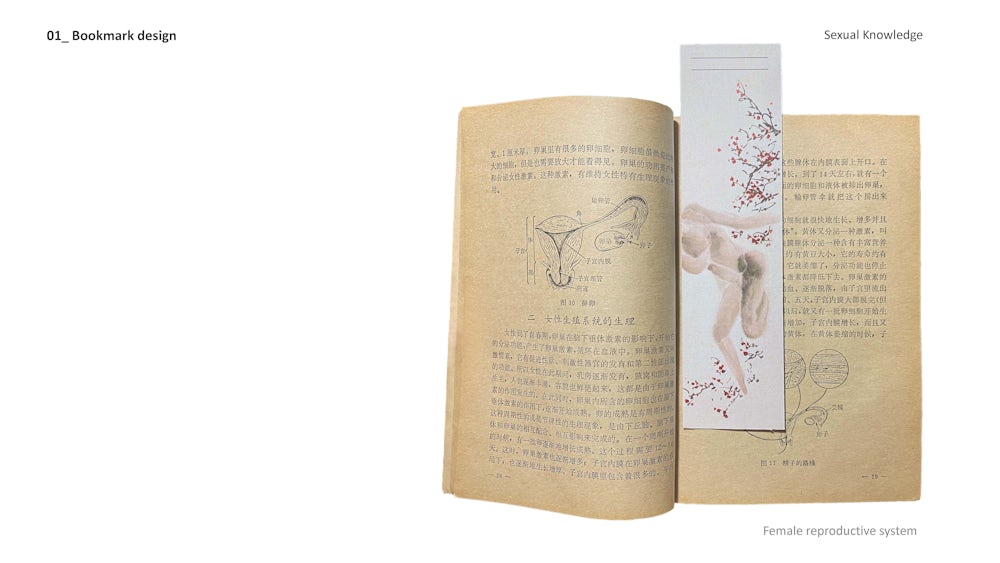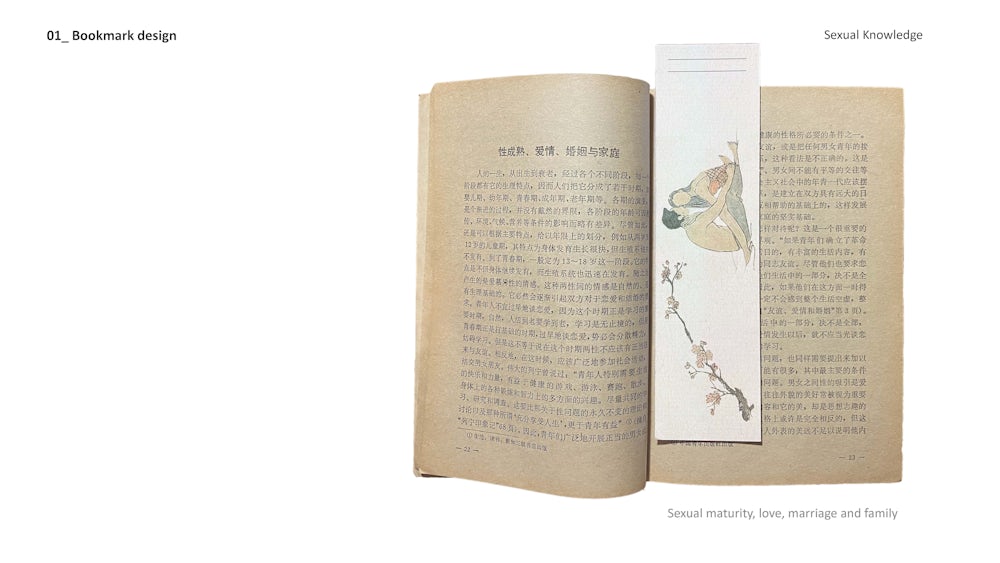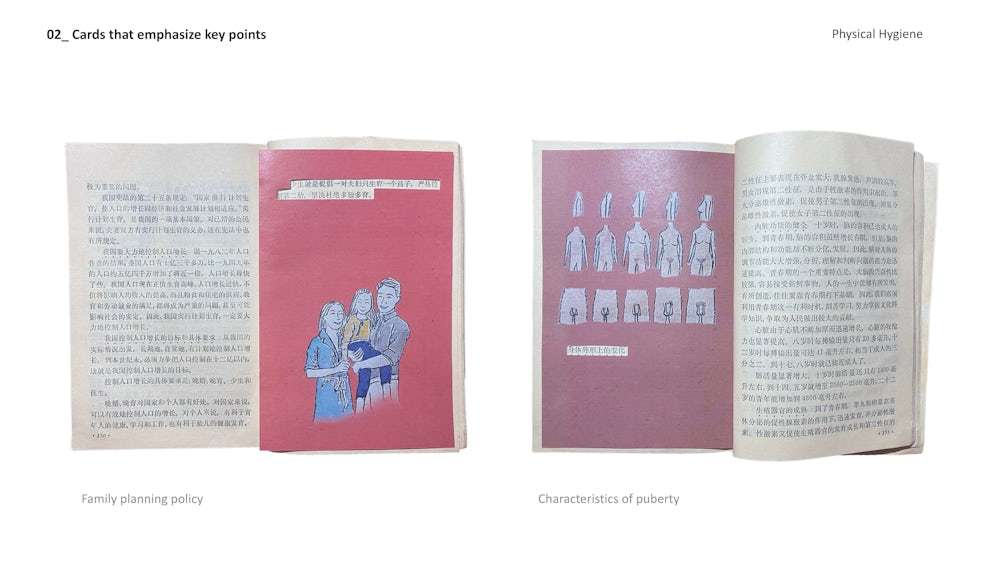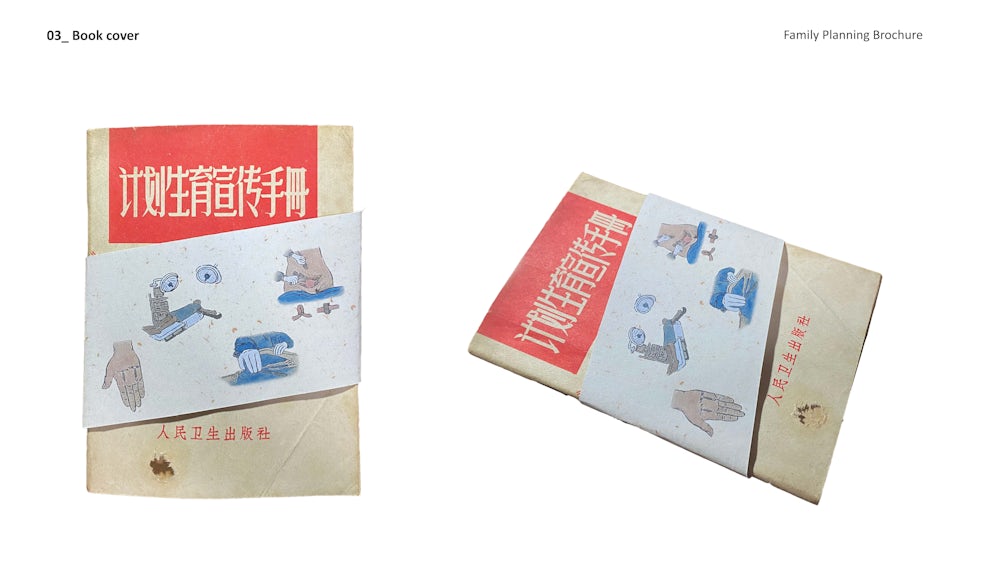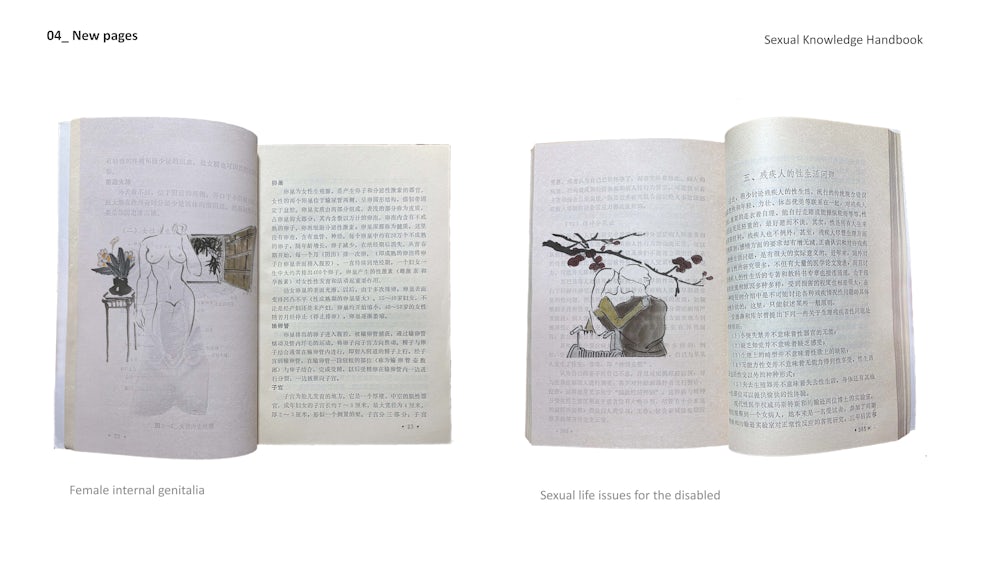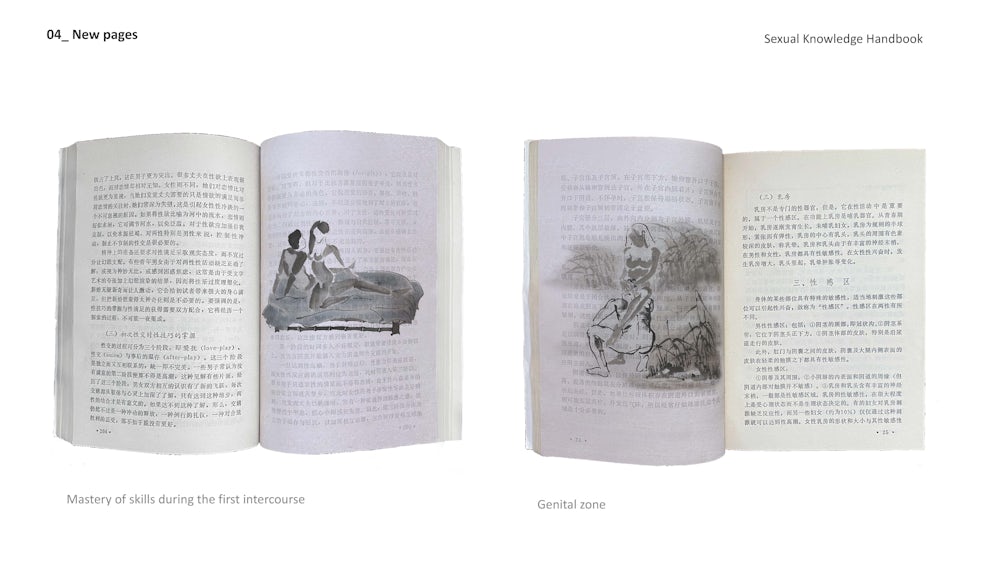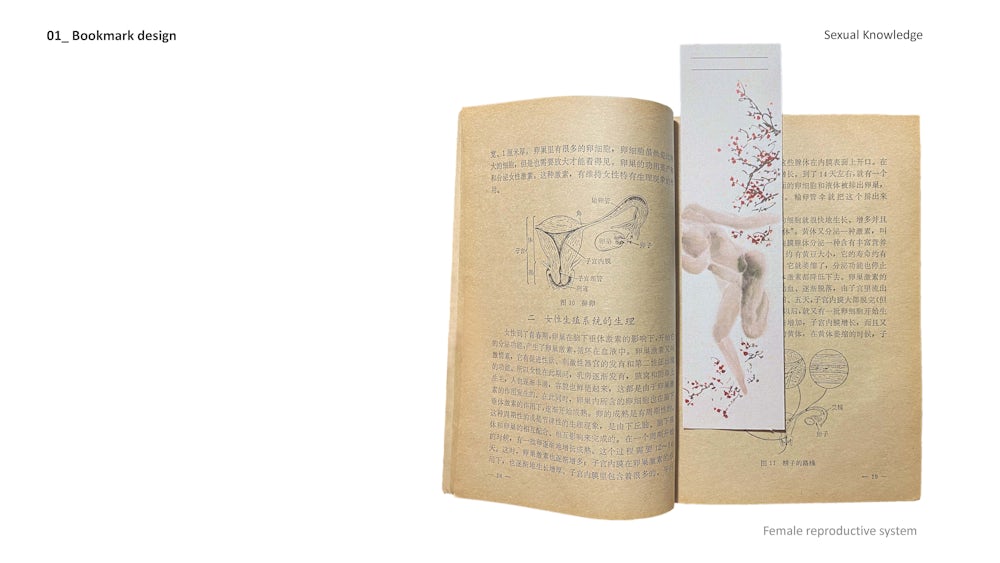To study sex education in China from the 1990s until the reform period, I focus on the four most important books and their drawings. These books reveal how biopower is manifested through a knowledge production that is laced with intensions indoctrinating the state's power through the governance of the body. Conceiving the project as a series of interventions onto the books themselves, the project reveals hidden knowledge by juxtaposing new drawings with the existing ones.
In the first book, Sexual Knowledge, I utilize the bookmark. Published in 1955, this is China's first correct and systematic booklet. With only 74 pages, it contains plenty of text but very few black and white illustrations. Therefore, adding coloured bookmarks on specific pages gives a visual context and a space for people to add their own personal insights.
The second book, Physical Hygiene, is the first middle school teaching material. It talks about sex in a medical context. By using cards, I emphasize some key words regarding important information around family planning policy, giving space for the reader to think critically about these views in the book after decades since its production.
The third book, Family Planning Brochure, was compiled and published by the state to discipline the capacity of the human body. At the time of its publishing, family planning was a basic national policy and was later included in Chinese law in 2001. In the new drawings, I describe the birth control surgery process. China has liberalized this policy where a single couple is allowed to have two children. But the fertility rate continues to decline making it urgent to rethink this particular governance of the body.
The fourth book came out after China had experienced a decade of civil strife that started in 1966. Any books and articles about sex could not be circulated publicly. Therefore, it became the first book to break the taboo after China's reform. Here, the intervention took the form of new pages supplementing the text content for a more intuitive explanation.
Concerning the styles of the new drawings, I reference two different schools in Chinese traditional painting: claborate-style painting and freehand brushwork painting, since these materials can represent the context of this issue and can be easily grasped. The original illustrations are black and white line drawings or fuzzy photographs whereas the new drawings introduce colour to change the inherent concepts promoted in the book and evoke an emotional response.

